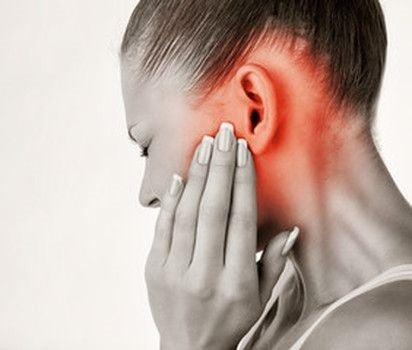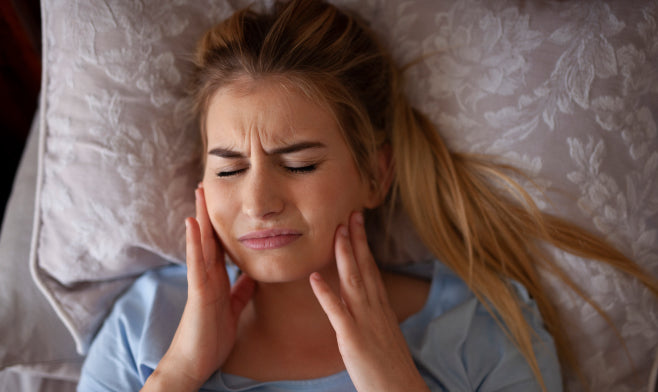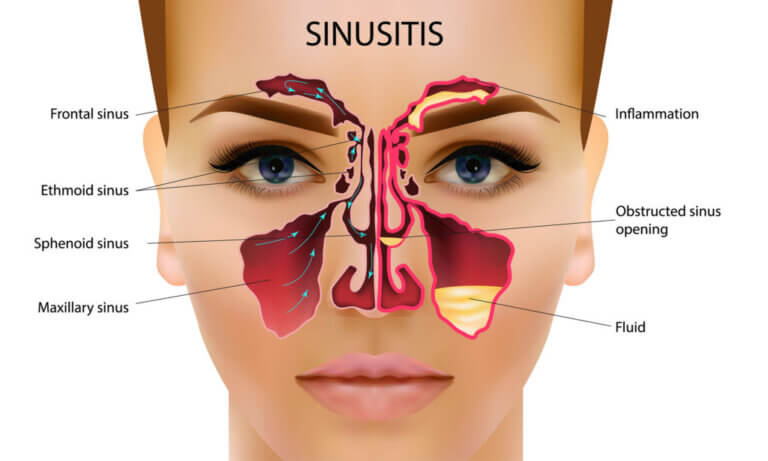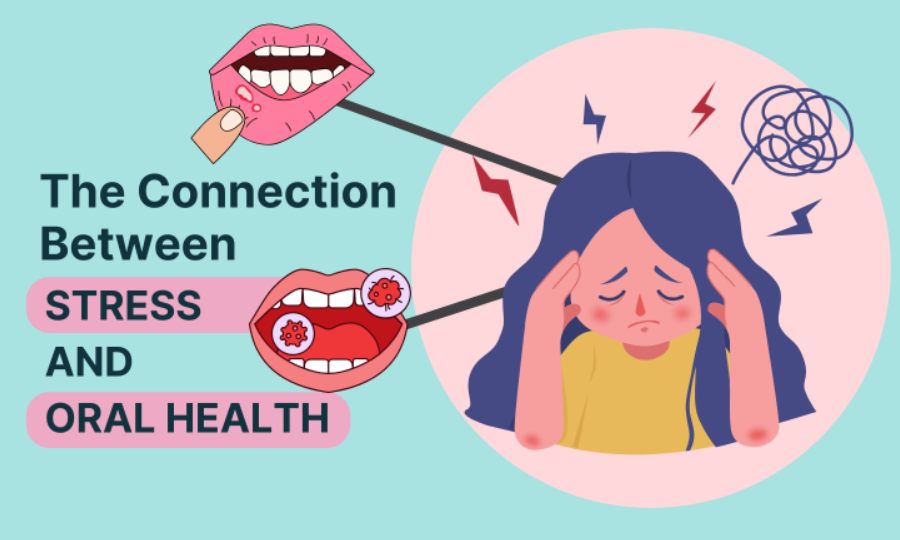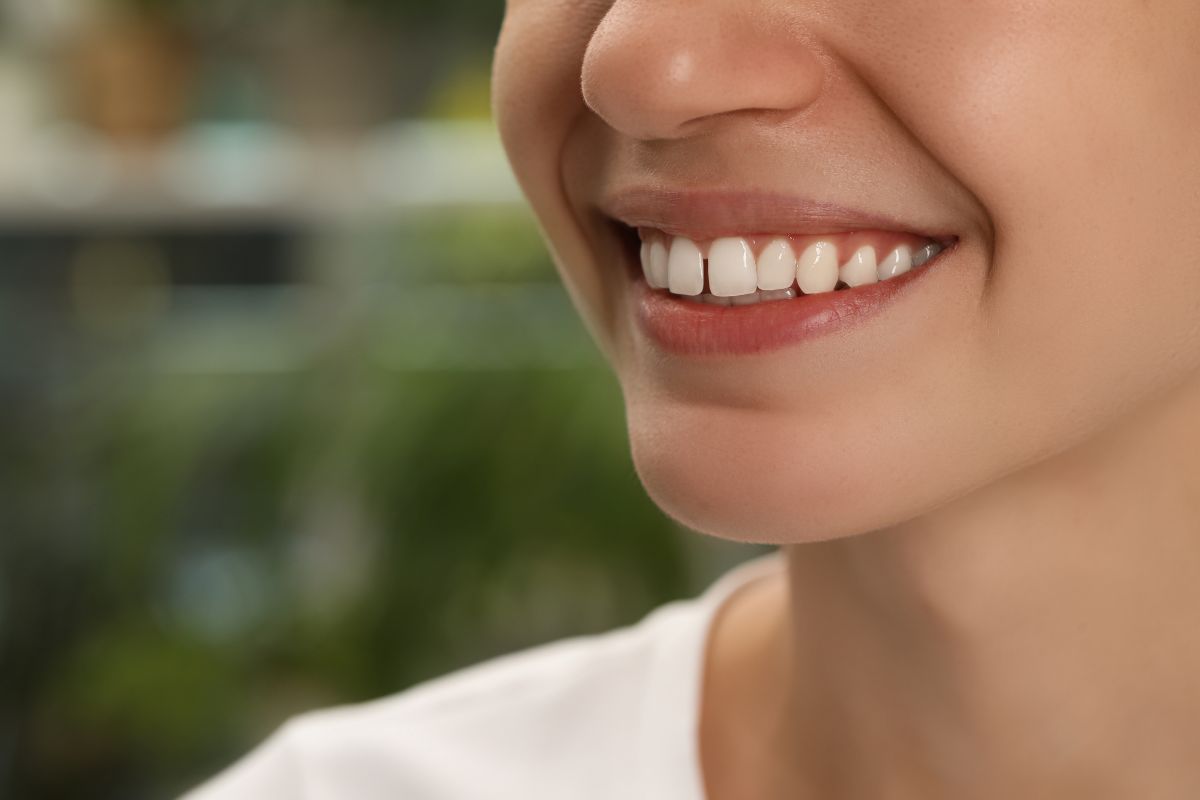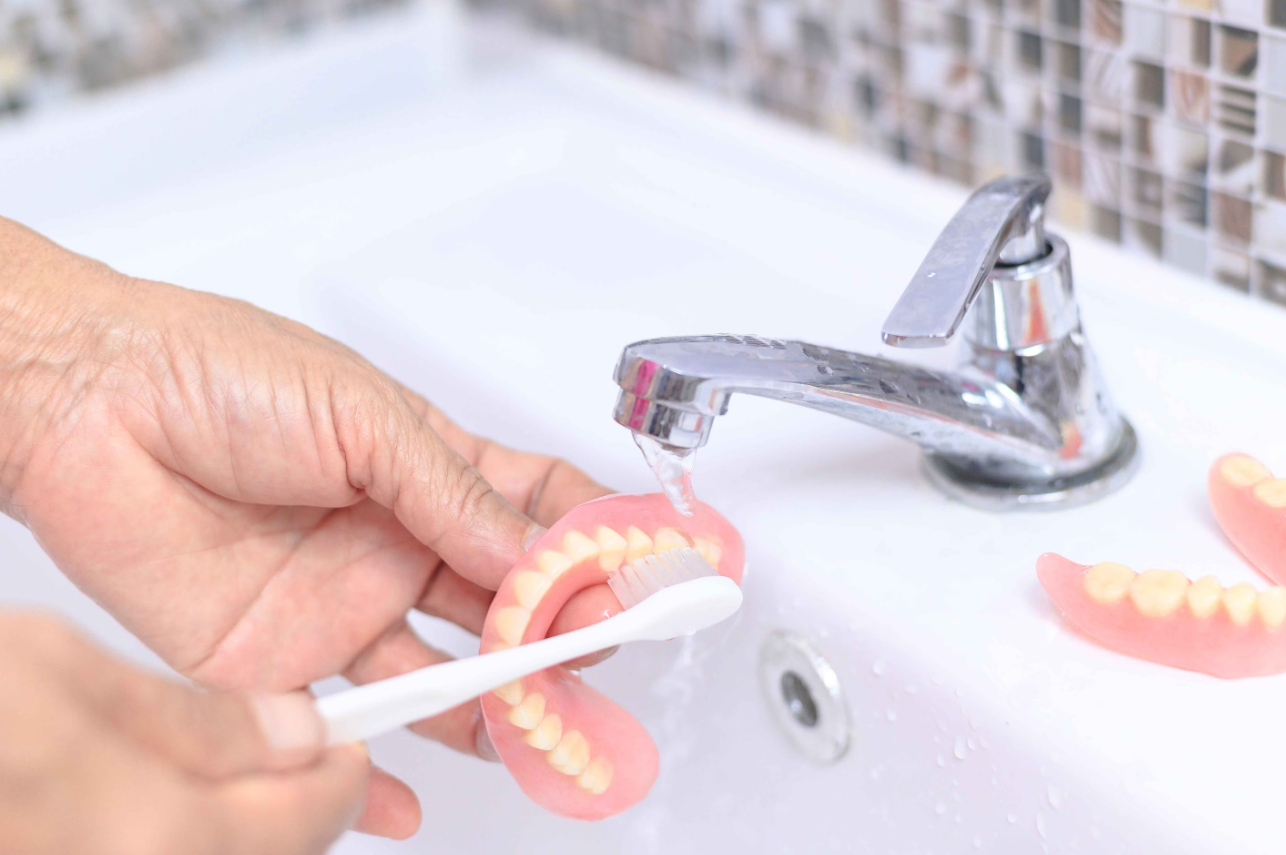Ache represents pain specifically in a weak immune area where you can feel some physiological change inside presenting itself as a disturbance. It may occur in adults as well as in children irrespective of age and gender. The most focal point is that earache may occur in one ear only and it may play hide and seek with you, coming and going, while the pain may be very sharp, burning like, dull, or extremely ignorable.

Temporary heart loss, irritability, infection, fever, and few other such symptoms may accompany if you have an ear infection. Young children with earaches become more fussy and irritable due to their inability to guess the problem as well as their presentation is very low, they cannot verbally tell their parents most of the time that what they feel. They either rub or tug their ears frequently and sometimes unknowingly. The Goodbye Company Earaches Essential Oil is a great solution for all the earaches related to either cold infections or any injuries or any other reason.
Types Of Ear Infections:
A human ear is divided into three anatomical parts being an outer ear, middle ear, and inner ear. Each part is sensitive to certain types of bacteria and viruses and any disturbance in any part of the ear can cause infection with wide range f symptoms and signs of infection.
- Outer Ear Infections: The pinna of the ear or lobe of the ear surrounds a very small hole that leads to the outer ear where infection can be caused by continuously using headphones, wearing hearing aids that may damage the ear canal from inside or swimming, or putting fingers or cotton swabs in the ear canal for long. Any irritation or scratch that may occur in the skin of the ear canal may lead to infection. The ear canal skin can be softened with continuous water and may create a favorite area for bacteria to develop.
- Middle Ear Infections: The middle ear consists of three bones and a shaft connecting the inner ear with the outer ear. It is directly connected through the Eustachian tube to the throat and respiratory tract. Middle ear infections may build up by an infection that may initiate in the respiratory tract and reach the middle ear. Fluid can be build up and may create a blockade behind the eardrum due to these infections. This pooling of fluid may create an environment prone to the development of bacteria and other microorganisms.
- Inner Ear Infections: The inner ear consists of cochlea and hair that carry messages from outside to the brain by connecting through afferent vestibulocochlear nerve reaching temporal lobes of the brain conducting all the information related to the ear. Labyrinthitis is a disorder of the inner ear that is caused by either bacterial or viral infections from respiratory illness.
Common Causes Of Earaches:
The causes of earaches may range from irritation, infection, injury, or some referred pain, the pain that has some underlying origin of the pain that lies at a place other than the infected site. Sometimes pain in the jaws or teeth or head can be felt in the ear due to a vestibulocochlear pathway coinciding with the eighth cranial nerve providing information to the higher brain centers of the body. Other causes of earaches may include:

Ear Infections: A very common cause of earache is an ear infection that may occur either in any one part of the ear or all parts depending upon the situation. The ear has anatomically three basic parts, the outer ear, middle ear, and inner ear, each part further subdivided into different bones and tissues. The detail has been provided already for the three types.
Any change in pressure: A normal frequency that is audible for the human ear is from twenty hertz to twenty thousand hertz. Any change in this audibility can create extra pressure on the ears and may cause disruption or other ear disturbances or infections, as during flying on a plane.
The buildup of earwax: An ear wax is a material being clogged inside the ears to keep it moisturized to a certain limit to create natural fluidity medium and at the same time creates a blockade for the entry of any foreign material as dust or other things.
Foreign object in the ear: Any foreign object or material in the ear may create pressure in the ear making it prone to any infection.
Sep throat or sore throat: A sore throat or step throat creates infection of the middle ear especially due to the Eustachian tube connecting the middle ear with the respiratory tract.
Sinus Infections: A sinus infection infecting all the respiratory tract parts of the body like the nose, throat, and ear may become the cause of any part or all parts of ear infection.
Trapped shampoo or water in the ear: non-caring attitude during giving bath to a bay or self, any shampoo or water trapped inside the ear may become the cause of ear infection.
Using cotton swabs in the ear: Using loose cotton swabs in the ear may result in the deposition of cotton pieces in the ear or putting more pressure while using a cotton swab to clean the ear may cause an ear infection.
Temporomandibular joint syndrome (TMJ): A joint that connects the skull to the mandible is called the temporomandibular joint. The joint can be found in front of your ears on both sides of your head. It may allow your jaw to open and close and may enable you to eat and speak.
Perforated eardrum: A perforated eardrum due to either cotton swab use or any injury to the ear or listening to sound that is with high frequency may create injury to your eardrum.
Arthritis affecting jaws: Arthritis is the inflammation of the joints that may affect the jaws and ultimately ear infections may appear.
Infected tooth: An infected tooth may create an ear infection since it is directly connected.
Impacted tooth: An impacted tooth unable to get rid of the gum may cause an ear infection.
Eczema of the ear canal: An eczema of the ear canal causing itching and bacterial infection may create a severe form of ear infection that is sometimes difficult to treat.
Trigeminal neuralgia: A chronic facial nerve pain infecting the whole facial area may cause an ear infection.
Cavities: A cavity or several cavities in teeth may cause hooting pain towards the ears.
Tonsillitis: A swelling in the throat and tonsils may lead to cracking pain in the ear causing an uncomfortable feeling.
Allergic reactions: Animal dander, pollen, and other foreign substances sometimes act as foreign substances to people and cause allergic reactions. This triggered hypersensitivity involves certain cells in the immune system that release histamine. Histamine once released may cause itching, swelling, and increased mucus production. The membrane lining of the Eustachian tube can react to an allergen as pollen by being inflamed. The inflammation caused may cause an imbalance in the ear pressure. When pollen counts increase in seasonal changes, it may result in several reactions as:
Pressure: The mucous membranes lining the nasal cavities and ears get inflamed by the release of histamines that are released as a result of allergic reactions. A blockage appears in the ears due to this inflammation that prevents mucus or fluid from draining away. The continuous fluid present makes this part of the ear prone to infection leading to ear pain due to the pressure building up inside the ears.
Infection: The middle ear of the human ear is filled with fluid that keeps the balance of the human structure by connecting it to the nervous system. If an infection develops in this fluid, it can cause pressure building up causing pain, redness, and swelling of the eardrum (the tympanic membrane). It is known as otitis media. It may also cause dizziness or ringing in the ears or both. Sometimes, loss of balance occurs due to persistent otitis media. In case of severe infection, the eardrum may rupture and cause pus leakage from the ear.
Loss of hearing: Short-term hearing loss may occur due to an allergic reaction that may result in inflammation of Eustachian tubes. When the allergies abate, this conductive hear loss may self-resolve.
Symptoms Of Earaches:
Earaches can develop from any kind of ear infection or injuries to the outer, middle, or inner ear. It may occur at any age or gender. The most common signs and symptoms of earaches in adults are:
- Ear pain: Pain in the ear although you cannot judge whether it is in the inner ear or middle or internal ear but it creates a continuous irritation due to pain.
- Impaired hearing: Hearing may become impaired either of both ears or one ear.
- Fluid drainage from the ear: Any simmering fluid from the ear may be an alarming symptom for your ear infections.
The most common signs and symptoms of earaches in children are:
- Ear pain: Pain in the child\’s one ear or both ears may be a symptom of ear infection.
- Muffed hearing: Children may become irresponsive to sounds or muffed hearing may be a leading symptom of ear infection.
- Fever: Sometimes the ear infections lead to fever as an immediate reaction to the ear infection.
- Sense of fullness in the ear: Ears may feel full in their capacity giving a sign of some uneasiness.
- Difficulty sleeping: The child may be unable to sleep at all or may feel difficult to get asleep due to an ear infection.
- Pulling or tugging at the ear: The feeling of tugging or pulling may be a sign of ear infection in children.
- Irritability or crying: Abnormal crying or irritability of the child may be an indication of an ear infection.
- Headache: Continuous headache may be a sign of ear infection.
- Loss of appetite: Long-term hunger or loss of appetite, aversion to eating anything may be a sign of ear infection.
- Loss of balance: Balance may be affected due to the vestibulocochlear nerve connecting the vestibular apparatus of the body and hearing sensation to the nervous system.
Treatment Of Earaches, Either At Home Or With Over-The-Counter Medication:
Earaches can be a quite irritating and frustrating experience since they may create continuous uneasiness on listening and understanding. It gives you unrest if you have severe pain for an unknown reason. Before taking any medication or before visiting the doctor, you may try some home remedies and treatments to get rid of it.
Home Treatments For Earaches:
Home treatments for earaches may include:
Cold washcloth: Warm compresses like a heating pad or damp washcloth or ice packs are used to relieve the pain in the ears. The method is considered safe for both adults and children. Place the ice pack or warm compress alternatively over the ear after every ten minutes. You can use just one compress to either cold or warm.
Wet ear: You should avoid wetting your ears while taking bath or swimming. You may use a shower cap to cover your ears while taking bath.
Upright position: You should sit in the upright position to help relieve pressure inside the ear which may get enhanced by lying down or sitting tilted.
Naturopathic drops: Over-the-counter naturopathic drops are made from herbal extracts. These are available in some drug stores as well as are provided online. Any drops containing herbal extract in olive base oil have been proved to be more effective than traditional over-the-counter ear drops.
Pain-relievers: You may use over-the-counter pain relievers not involved with the ear but general ones that may cover the ears.
Chewing gum: You may use chewing gums and other pressure relievers that may help to counter the pain.
Feeding infants: You may feed an infant if possible to help them relieve their pressure.
Olive oil: A folk remedy to be used for earache is olive oil. Olive oil should not be warmer than the body temperature and make sure by thermometer before instilling olive oil drops inside the ear. Although there is no solid scientific evidence to prove that olive oil can soothe the ear pain in the ear canal but still it is considered safe and effective to be used for earache.
Chiropractic treatment: A chiropractor\’s adjustment may make your earache vanish as much as your back pain. Although with no scientific evidence it has been found that a study of 1996 involving forty-six child participants of age five and under showed improvement following chiropractic adjustments.
Sleep without pressure on the ear: Some sleep positions help to relieve the earaches while some other sleep positions may aggravate the earaches. Sleeping with the position to keep the infected ear up instead of facing it down towards the pillow may help to relieve the earache. It may also help to drain the ear better. Sleeping with elevated head position by using extra pillows may help too either to drain it faster or to relieve the pressure or both sometimes.
Neck exercises: Sometimes the earache is caused by the pressure inside the ear canal. Few neck exercises may help to relieve the pressure by rotation of the neck in certain ways. Following these steps may help you to perform these neck rotation exercises:
- You may sit straight up on the ground with both feet flat.
- Rotating slowly your head and neck to the right until your head is parallel to your shoulder.
- Rotating your head the other way until your head is parallel with your left shoulder.
- Raise your shoulders high as if you are trying to cover your ears with your shoulders.
- Try to make the movements slowly, hold them gently stretching more for a count of five, and then relax completely.
- Repeat these neck exercises often throughout waking hours.
Ginger: Ginger can help to soothe the pain and uneasiness in the ears with its anti-inflammatory properties. Ginger juice or strained oil may be applied that had warmed with ginger in it around the outer ear canal. It may not be directed to put it directly into the ear.
Garlic: Garlic may have both pain-relieving and antibiotic properties. Crushed garlic may be soaked for several minutes in warm olive or sesame oil. Garlic may be strained out and oil applied into the ear canal.
Hydrogen peroxide: A natural remedy for earaches that has been used for years is hydrogen peroxide. You may place several drops of hydrogen peroxide into the affected ear to use the method effectively. Let it sit for several minutes before letting it drained. You may rinse your ear with clean, distilled water.
Distraction: If a child is battling with an earache then you can put his or her mind off the pain by making them comfortable and distracting their minds towards other things. :
You may try to distract them by:
- Bringing home a new coloring book
- Putting their favorite movie on television
- Giving them a bubble bath with a lot of toys
- Let them play a game on your tablet or phone
- Pick up their favorite snack
- Find other things for them to focus on
- Offering cooled teething toys for chewing if the child is of teething age.
The same method may be applied to adults too to take their minds off the pain.
Medical Treatments For Earaches:
If the home treatments are not working enough to relieve the pain and pressure, then you may need medical treatments for your earache.
Oral antibiotics and ear drop: A doctor or physician may prescribe eardrops or oral antibiotics that may help to kill the bacteria and counteract the symptoms of infection and earache. Depending upon the severity of the problem, the doctor may sometimes prescribe both at the same time to be taken simultaneously to combat the effects. Once your symptoms get improved, do not stop taking medication. The antibiotics are needed to be given for a prescribed period to fully finish the bacterial or viral infections. The infection may relapse if you stop taking further medication after initial relief.
Over-the-counter allergy-relieving medications: Over-the-counter antihistamines that are readily available to address a variety of allergy symptoms are:
- Cetirizine
- Diphenhydramine
- Chlorpheniramine
- Fexofenadine
- Levocetirizine
- Loratidine
A decongestant may be added by your doctor or physician to reduce the feeling of fullness n the ears. These include:
- Pseudoephedrine with cetirizine
- Pseudoephedrine with fexofenadine
- Pseudoephedrine with loratadine
Your doctor or physician may prescribe a corticosteroid nasal spray to address runny nose, sneezing or stuffiness, etc. These include:
- Budesonide
- Fluticasone furoate
- Fluticasone propionate
- Mometasone
- Triamcinolone
Wax-softeners: The doctor may prescribe wax-softening drops for you if he observes the building up of wax inside your ears which may be a cause of pain. By using the wax-softeners, the wax may soften and fall on its own. A doctor may also flush out the wax by using the ear lavage technique or a suction pressure procedure used to remove the wax.
Direct interpretation of underlying reasons: The doctor may use direct procedures to treat TMJ, sinus infections, or any other causes of earaches.
Treating Middle Ear Infections:
Oral or directly to be applied antibiotics may be used to treat middle ear infections in the form of drops or tubes. Pain-relievers, anti-inflammatory drugs, and other over-the-counter drugs are used to manage the symptoms. A decongestant with nasal steroid and antihistamine may be prescribed by the doctor may help you to relieve the symptoms of allergic infections.
Autoinsufflation is a technique that may help to clear the Eustachian tubes. Squeezing your nose, closing the mouth, and exhaling very gently may clear the tubes. This may be able to send air through Eustachian tubes to help drain them.
Treating Outer Ear Infections:
Application of anti-inflammatory or antimicrobial medications on your ear may help you to relieve the infections after cleaning the outer ear carefully. Antibiotics may be prescribed for outer ear infections in case the bacteria is the culprit. In case it’s a viral infection, then you have to wait for the infection to resolve itself once the viral cycle is complete. More specialized treatment may be prescribed in case of severe viral infections.
Prevention Of Earaches:
Although you cannot assume when you will have an earache and due to which reason but you can take certain preventive measures to avoid its occurrence. These include:
Smoking: You must always avoid smoking and exposure to secondhand smoke if you are least immune to any exposure of smoke since it may cause earache and pressure building inside your ear.
Foreign objects: Stay away from any foreign objects to be used inside the ear.
Keep ears dry: Try to keep ears dry after swimming or bathing by using a towel or tissue paper.
Avoid cotton buds: You should avoid using loose cotton buds to avoid any mishap.
Earplugs and headphones: You should avoid using earplugs and earphones for the long term to avoid pressure build-up and it may cause pain too.
Allergy triggers: You should avoid allergy triggers, like pollen and dust, and keep yourself covered with proper hygienic measures.
Keep hygienic: Keep your ears neat and clean by regular washing, removing wax at proper intervals, and avoiding any dirt storage. Wash your hands quite often.
Avoid overcrowded: Avoid overcrowded areas and gatherings.
Forgoing pacifiers: Must avoid usage of pacifiers with infants and small children.
Preferably breastfeed: Infants must be encouraged to be breastfed.
Immunization: Always keep immunization regular and up to date.
When You Should Visit The Doctor For Earaches:
Normally you can treat or cure earaches at home by taking over-the-counter drops or by observing certain precautions but if your child is suffering from a persistent fever of one hundred and four degrees Fahrenheit or higher, then you should seek medical attention. In the case of an infant, if fever enhances more than one hundred and one degrees Fahrenheit, you should immediately consult a physician.
In case, your earache doesn’t subside despite all home medications and over-the-counter treatment, then you should seek medical attention and must undergo all tests to confirm the cause of persistent earache. Sometimes it’s a sign of eardrum rupture. You may keep an eye on severe symptoms too. If any of these symptoms persist, then immediately make an appointment with the doctor. These symptoms include:
- Prolonged dizziness
- Severe pain in the ear and head
- Headache that may include ear but not sure
- Swelling around the ear
- Facial muscles drooping
- Any blood drops or pus draining from the ear
If an earache worsens or doesn\’t improve within twenty-four to forty-eight hours, then you should make an appointment with the doctor.
Risk Factors For Ear Infections Leading To Earaches:
In young children, most of the time ear infections occur because they have narrow and short Eustachian tubes. Infants who are only bottle-fed have higher chances to develop ear infections than the ones who are either completely or partially breastfed. The factors contributing to the development of ear infections leading to earaches are:
- Bottle-fed infants
- Climatic changes
- Seasonal changes
- Altitude changes
- Cigarette smoke exposure
- Use of pacifier for long
- Use of earphones or headphones for long
- Recent illness or ear infection
- Wet ears for long during swimming or taking a bath
- Staying in an area with louder sounds for more time
Diagnosis Of Ear Infections And Earaches:
Earaches and ear infections or any other problem related to ears may be examined by your doctor or physician with the help of an otoscope, which is an instrument with a light and magnifying glass. The revealing of otoscope may be:
- Air bubbles, redness, or pus-like fluid inside the middle ear
- Draining of fluid from the middle ear
- A perforation in the eardrum
- A collapsed or bulging eardrum
If the infection looks advanced or more severe, then the doctor may test the fluid inside the ear to determine whether any antibiotic-resistant bacteria are present or not. A computed tomography scan (CT scan) of your head may be ordered by your doctor if the infection spreads beyond the middle ear. A hearing test may be prescribed by your doctor if you are suffering from chronic ear infections.
Long Term Expectations Of Earaches:
Earaches caused by ear infections or any other reasons may clear up without intervention but sometimes they recur. These infections may lead sometimes to several problems as:
- Hearing loss
- Language or delay in children
- Mastoiditis-an infection of the mastoid bone in the skull
- Meningitis-a bacterial infection of the membranes covering the spinal cord and brain, the central nervous system
- A ruptured eardrum
How Cold Cause An Earache:
Catching cold may have many effects on you as cough, respiration arrest, sinus issues, difficulty breathing. Among all these symptoms you may catch an earache that may enhance your irritation and problems. One of the following reasons may contribute to your earache due to cold:
Congestion: Your middle ear is connected to your upper throat and back of your nose through the Eustachian tube. Its normal function is to stop excessive air pressure and fluid to get accumulated in your ear. If you get cold by chance, then mucus and fluid from your nose can build up in your Eustachian tube and may create a blockade. This blockade can create pain in the fear and discomfort. Your ear may feel plugged or full due to this fluid build-up. Ear congestion may get better as the cold gets away but sometimes if prolonged it may cause secondary infections.
Otitis media: Otitis media, the middle ear infection is a common complication of cold and flu. When viruses in your nose and throat enter your ear through the Eustachian tube, it causes otitis media. Bacteria can grow in the fluid build-up in the middle ear and may cause a middle ear infection. It can lead to ear pain, swelling, redness, difficulty hearing, green or yellow discharge, fever, and many other conditions.
Sinus infection: Sinusitis, inflammation of the sinus gland, or sinus infection may occur due to unresolved cold that may prolong and create the infection. The inflammation in your sinuses may occur in your nose and forehead. With sinusitis you may experience ear pressure and may hurt your ear along with some other symptoms:
- Postnatal yellow or green discharge
- Congestion
- Difficulty breathing through your nose
- Facial pressure or pain
- Headache
- Toothache
- Cough
- Bad breath
- Poor sense of smell
- Fever
- Fatigue
Home Remedies For Ear Pain During Cold:
Few home remedies can be tried to reduce the ear pain if it doesn’t get away itself.
Cold or hot compress: A heat pack or ice pack may be used to relieve swelling and pain in your affected ear area. Always try to wrap the pack in a clean cloth or towel. It may protect the skin from heat or ice.
Sleeping position: You must always try to sleep with the infected ear towards the upper side to decrease the pressure on the infected site. You can try to keep your head up by placing two or more pillows to reduce pressure. It may cause strain in your neck so be careful to place your head so high.
Nasal rinsing: If earache occurs due to any sinus infection, you must try a nasal rinse. It may help to drain and clear your sinuses.
Hydration: You must drink lots of fluids to keep yourself hydrated. It may loosen your mucus and speed up recovery.
Rest: Resting may support your body’s ability to fight back against cold or any secondary infection by boosting your immune system.
Precautions To Be Observed When Treating Cold-Induced Earaches:
Common cold medications may help you to manage the symptoms associated with cold infections as earaches and others. However, it\’s not necessary that they must take away the earache completely. Sometimes with less knowledge, you may harm yourself as with over-the-counter drugs you may create harmful synergistic effects on yourself. As you may notice that Nyquil and Tylenol have acetaminophen, taking both simultaneously may destroy your liver for the long term. Sometimes over-the-counter drugs may interact with your prescription medications so you must tell your doctor before taking any over=the-counter medications or pain relievers.
Please keep few things in mind as precautionary measures while treating cold infected ear aches either with over-the-counter drugs or with the prescribed medications:
- Cold medications for young children: Do not give any medications unless your doctor prescribes for so especially if your child is under four years old.
- Aspirin: Aspirin must be avoided for children and teenagers. It may be considered unsafe for this age group due to the risk of developing Reye\’s syndrome.
- Oils: Few oils as tea tree oil, olive oil, garlic oil, ginger oil, etc. may be used at homes for treating such cold caught ear infections but there is no scientific proof of such usage.
- Cotton swabs: Always avoid cotton swabs or other foreign objects inside your ear.
When To See A Doctor For Cold Infected Earaches:
Cold-induced ear pain often relieves on its own normally but if you see any disturbing symptoms please see your doctor. These symptoms may include:
- Symptoms may persist for a few days even after medication
- Symptoms may get worse rather than getting better
- Severe earache
- Fever that may persist for longer
- Hearing loss
- Both ears feel pressurized and infected rather than one.
Diagnosing Earaches:
A doctor or physician may use several methods to determine the real cause of your earaches. These may include:
- Medical history: Complete medical history about your symptoms and history of ear pain may be taken by the doctor.
- Physical examination: An otoscope may be used to examine your ear from inside for redness, swelling, pus, etc. The doctor may look into the throat and nose too.
The Goodbye Company Earaches Essential Oil is a great solution for all the earaches related to either cold infections or any injuries or any other reason.


